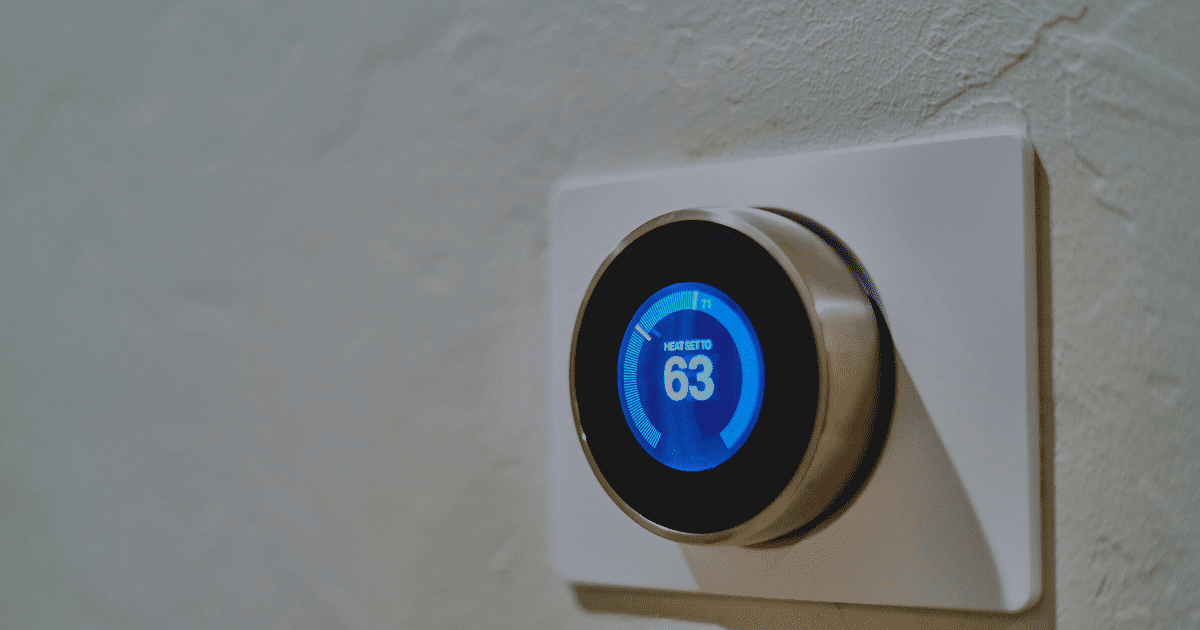Last Updated on 7 June 2023 by Alastair Digby
Table of Contents
The Internet of Things (IoT) is a term used to describe the growing trend of interconnected devices and has been a hot topic in cyber security for some time now. But, although most people are aware of the benefits that IoT tech brings, many don’t know the risks. In this blog, we’ve covered the essentials to help you better understand IoT security.
What is the Internet of Things (IoT)?
Connecting the dots
IoT refers to the network of physical objects such as cars, household appliances, and other items embedded with electronics, software, sensors, actuators, and connectivity – enabling them to collect and exchange data.
These devices tend to be marketed as more convenient than the old-school versions that have been around for decades, explaining their popularity. After all, they can be very helpful, allowing you to control devices remotely – like having your washing machine automatically order detergent when it runs low!
Across the globe, the versatile tech that makes up the IoT is revolutionizing many aspects of modern life. From industries like food production, finance, healthcare, and utility to the increasing numbers of smart homes and even cities – IoT possibilities are endless.
However, even with all those benefits, it does have its risks. Having a weak device and network security could make you an easy target for e.g. password-related attacks, which can leave your organization wide open to cyber-attacks.
What are the security risks associated with IoT?
Helping or harming?
Despite vendors pushing out these seemingly appealing devices into the public sphere, IoT is still in its infancy and security has failed to keep up with the new technology. For that reason, IoT systems should be chosen carefully.
The reality is that there is a flipside to enhanced connectedness: the more devices introduced to a network, the more vulnerabilities are introduced. IoT security challenges come in many shapes and forms. Countless security flaws go unnoticed due to these devices’ innate ability to interoperate without requiring manual intervention.
If you look around you right now, my guess is that you can probably see at least one IoT device? Well, each piece of smart tech represents an attack surface that could be used by an attacker to compromise your data. And, if they can gain access to at least one of your connected devices, often they can access all of them.
As numerous devices are connected often without important security settings, the IoT has inevitably become an enticing playground for cybercriminals. IoT device security is still growing and the protection available for these systems is developing rapidly. However, as it currently stands, a security flaw, or a malicious actor could gain unauthorized access to a home network and digitally hijack their target’s home security system, with the victim none the wiser. In fact, the average household is hit with more than one hundred cyber threats per month.
On the flip side, considering security solutions that provide multi-layered protection can mitigate certain risks.
What are the top 10 IoT security threats?
The prevalence of the threats below highlights the importance of implementing robust security measures, whoever you are. No matter how secure devices within your home or workplace are, they could all be exposed to certain dangers. OWASP has published the IoT Top 10 vulnerabilities which provide insightful details on the most common methods of attack, including
- Weak guessable, or hardcoded passwords
- Insecure network services
- Insecure ecosystem interfaces
- Lack of secure update mechanism
- Use of insecure or outdated components
- Insufficient privacy protection
- Insecure data transfer and storage
- Lack of device management
- Insecure default settings
- Lack of physical hardening
The IoT security foundation needs to be the same regardless of whether it is applied to a mobile or non-mobile device.
Ultimately, “you can’t manage or control something that you don’t know exists” (Tim Zimmerman, Gartner), so visibility into your threat landscape is key to securing your devices.
How can I secure my IoT devices to reduce my attack surface?
Because the core purpose of IoT is to connect devices, data is constantly being shared and updated. For that reason, IoT enabled devices are at continuous risk of data breaches.
Data trafficking has become one of the highest revenue-generating crimes globally. Breaches like Equifax, Uber, and SolarWinds are just the tip of the iceberg. With over thirty-five billion IoT devices now installed around the world and data surpassing oil as the most valuable asset on earth, there’s no wonder concern is growing.
First, you need to understand the threats associated with the growing constellation that is IoT. Then, you can protect your data, finding a balance between convenience and security.
In an enterprise environment, the IoT usually exists within office automation and operational tech processes. Depending on the size, multiple devices can be deployed within a single enterprise, and with that incites an abundance of threats that most aren’t prepared to combat.
Most internet-facing devices also have less processing and storage capacity than anchor devices like laptops and computers. As a result, they are less likely to have the necessary firewalls and antivirus software needed to effectively safeguard them.
Best Practices for IoT Security
1. Keep Devices Updated
Regularly update the firmware and software of IoT devices to ensure they have the latest security patches and bug fixes. Manufacturers often release updates to address vulnerabilities discovered after the devices’ initial release.
2. Use Strong Passwords
Create unique, complex passwords for each IoT device and change them periodically. Avoid using default or easily guessable passwords, as these are a common target for hackers.
3. Enable Two-Factor Authentication
Implement two-factor authentication (2FA) whenever possible to add an extra layer of security. This requires users to provide a second form of identification, such as a code sent to their mobile device, in addition to their password.
4. Segment Networks
Isolate IoT devices on a separate network segment to prevent unauthorized access to other connected devices or systems. This limits the potential impact of a compromised IoT device on the rest of the network.
5. Encrypt Data
Ensure that data transmitted between IoT devices and networks is encrypted. Encryption adds an extra layer of protection, making it more difficult for hackers to intercept and decipher sensitive information.
6. Conduct Regular Security Audits
Regularly assess the security posture of IoT devices and networks through security audits. This helps identify vulnerabilities and weaknesses that need to be addressed promptly.
Consider taking some time to review the Consumer IoT Security guides. They can help you better understand the intricacies of IoT and risks associated with unsecured devices connected to your network.
Prioritize your IoT security
Don’t let a lack of knowledge leave you vulnerable
It is most important that you aren’t so blindsided by the offering of hyperconnectivity that you overlook the risk. OWASP has also released a list of the IoT attack surfaces – the main being devices, communication channels, and apps and software.
As most of us are aware, the digital traces of ourselves are being mined into a trillion dollar a year industry which makes us (or our data) a commodity. In response, we need to better understand our threat landscapes and accept that what we often deem as invisible is actually very much visible.
Frequently Asked Questions
What are the main challenges in IoT security?
The main challenges in IoT security include the large number of devices to secure, the lack of standardized security protocols, and the difficulty of updating devices with limited processing power and memory.
How can I protect my IoT devices from being hacked?
You can protect your IoT devices by keeping them updated, using strong passwords, enabling two-factor authentication, segmenting networks, encrypting data, and conducting regular security audits.
Can IoT devices be used in botnet attacks?
Yes, compromised IoT devices can be harnessed as part of a botnet to launch large-scale DDoS attacks or carry out other malicious activities.
What are the potential consequences of inadequate IoT security?
Inadequate IoT security can lead to data breaches, device hijacking, network vulnerabilities, privacy concerns, and botnet attacks, resulting in financial loss, reputational damage, and compromised privacy.
Are there any industry standards for IoT security?
Several organizations, such as the Internet Engineering Task Force (IETF) and the Industrial Internet Consortium (IIC), are working on developing industry standards and best practices for IoT security.
How can IoT security be improved on a global scale?
Improving IoT security on a global scale requires collaboration among manufacturers, policymakers, and consumers. This includes implementing security-by-design principles, adopting industry standards, and educating users about best practices.





